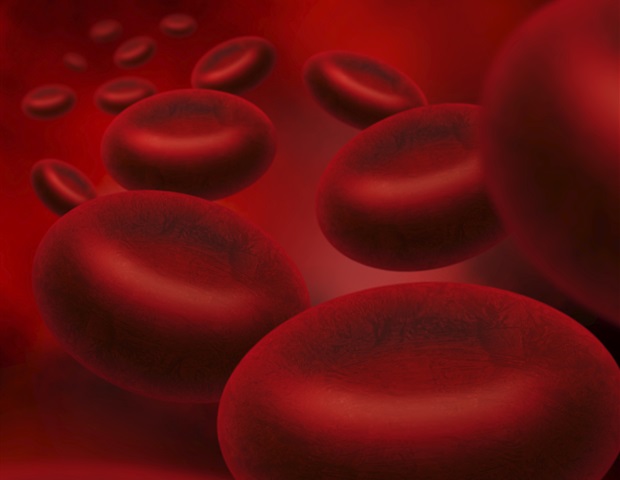Cancer and neoplasms
Myelodysplastic syndromes are commonly misdiagnosed, study finds
Blood disorders known as myelodysplastic syndromes/neoplasms (MDS) are difficult to diagnose – and are commonly misdiagnosed – putting patients at increased risk for treatment mistakes and other potentially harmful consequences, according to researchers with Sylvester Comprehensive Cancer Center at the University of Miami Miller School of Medicine and collaborating organizations.
Their findings, published Aug. 8 in Blood Advances, a peer-reviewed journal of the American Society of Hematology, highlight the vital need for strong coordination between clinicians and skilled pathologists to ensure accurate, timely diagnosis of blood cancers.
We found that expert pathologists had major disagreements with local pathologists’ diagnoses in about 20% of overall cases. Some patients were told they had cancer when they didn’t, or the opposite – that they did not have cancer when, in fact, they did. More importantly, we showed that misdiagnosed patients received the wrong initial treatment almost 10% of the time.”
Mikkael Sekeres, MD, chief of Sylvester’s Division of Hematology and corresponding study author
The researchers noted that MDS, a collection of chronic and more serious blood disorders, has widely varying prognoses and a tendency to evolve into acute myeloid leukemia (AML). The syndrome is diagnosed in about four of every 100,000 people in the U.S. annually, resulting in 20,000 new cases. However, experts believe the actual number could be higher due to underreporting and misclassification.
Most new diagnoses occur in patients over age 60. Survival rates range from about a decade to less than one year, depending on disease severity and other factors.
Sekeres and collaborators compared the results from more than 900 patients enrolled in the National Heart, Lung and Blood Institute’s (NHLBI) National MDS Natural History Study, an ongoing cohort study conducted across 144 sites in the U.S. and Israel, and which Sekeres chairs. The study was designed to build a data and biospecimen repository to advance MDS knowledge. Participants are enrolled when they are suspected of having MDS – or diagnosed with it — and scheduled for a bone-marrow biopsy as part of their care.
Local pathologists typically make the initial diagnosis using the World Health Organization’s classifications for MDS. Their findings are then reviewed by expert, central pathologists who either confirm or refute the diagnoses after reviewing bone marrow specimens, clinical data and laboratory results.
Central pathologists in the NHLBI study practice at tertiary academic medical centers and specialize in cancers of the blood and bone marrow, while the local pathologists are a more varied mix from community and academic centers.
For this study, the researchers compared local and centrally reviewed diagnoses to quantify rates and degrees of clinically meaningful differences among MDS categories. They also determined if misdiagnoses affected the provided therapy.
Findings
Key findings from the study included:
- Approximately one-third of cases received diagnostic reclassification after central pathologists’ review.
- One-fifth of MDS diagnoses were reclassified.
- 15% percent of the disagreements between local and central pathologists were the result of site miscoding errors by research coordinators, calling into question the accuracy of national cancer registries that include patients with MDS.
- Treatment rates were lower in cases with diagnostic disagreement versus ones in which local and central reviewers agreed.
- Misdiagnosed cases led to patients receiving inappropriate therapy in 7% of cases.
“Our findings highlight the vital importance of seeking expert opinions from National Cancer Institute-designated cancer centers, especially with rare blood and bone marrow cancers such as MDS,” said Sekeres.
He added that community-based oncologists and pathologists have more experience diagnosing common cancers, such as breast cancer, than rarer ones such as blood cancers. “They may miss subtleties that would cause them to question the verity of rarer diagnoses.”
Sekeres and fellow researchers also noted that their study has major implications for national registries and the Surveillance, Epidemiology and End Results (SEER) program.
“Our findings help to explain discrepancies in regional and national database reporting of MDS incidence rates, subtypes and outcomes,” he said. “Diagnostic disagreements, coding errors and evolving diagnostic guidelines call into question the accuracy of current population-based data.”
What’s the biggest takeaway? “Blood cancers are tricky to diagnose,” Sekeres said, “and require second opinions from highly specialized clinicians coordinating with highly skilled pathologists to ensure patients are accurately diagnosed and get the right treatment in a timely manner.”
University of Miami Miller School of Medicine
Gorak, E., et al. (2023) Discordant Pathologic Diagnoses of Myelodysplastic Neoplasms and Their Implications for Registries and Therapies. Blood Advances. doi.org/10.1182/bloodadvances.2023010061.

